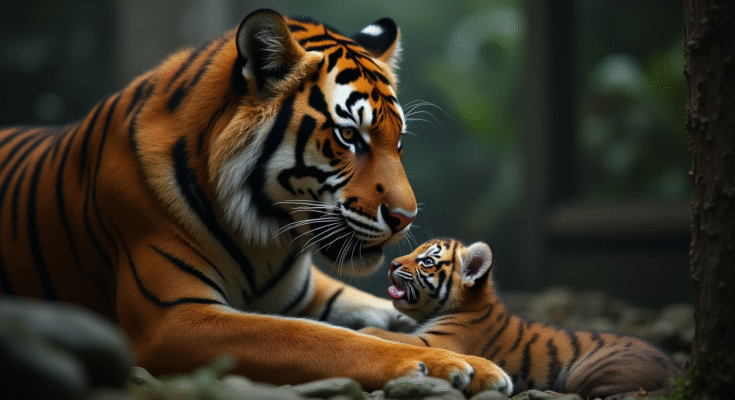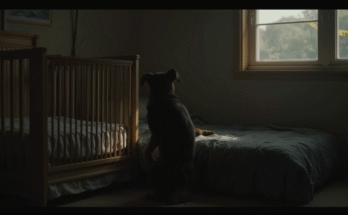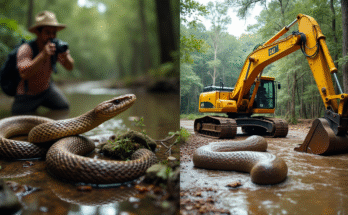The animal kingdom witnessed an extraordinary display of maternal instinct when Kaitlyn, a critically endangered Sumatran tiger at Australia Zoo, gave birth under the anxious watch of wildlife caretakers. As the first cub emerged lifeless, failing to take its crucial first breath, the first-time mother immediately sprang into action. With precise, instinct-driven movements, Kaitlyn vigorously licked the motionless cub, using her rough tongue to clear its airways and stimulate breathing. Caretakers watched with bated breath as she alternated between gentle nuzzling and firm chest compressions with her nose – a remarkable natural form of CPR. After nearly two agonizing minutes that felt like an eternity to observers, the tiny cub suddenly gasped, its sides heaving as life surged through its body. This dramatic moment underscored nature’s incredible resilience while highlighting the vital conservation efforts surrounding these majestic predators, of which only 400-600 remain in their native Sumatran habitats.
The Delicate Science of Big Cat Births: Why Intervention Wasn’t Needed
Veterinary experts explain that Kaitlyn’s actions perfectly demonstrated the sophisticated biological programming of tiger motherhood. Her immediate response to lick the cub served multiple critical functions: removing the amniotic sac that could suffocate the newborn, stimulating blood circulation through abrasive tongue strokes, and encouraging respiratory function through persistent attention.
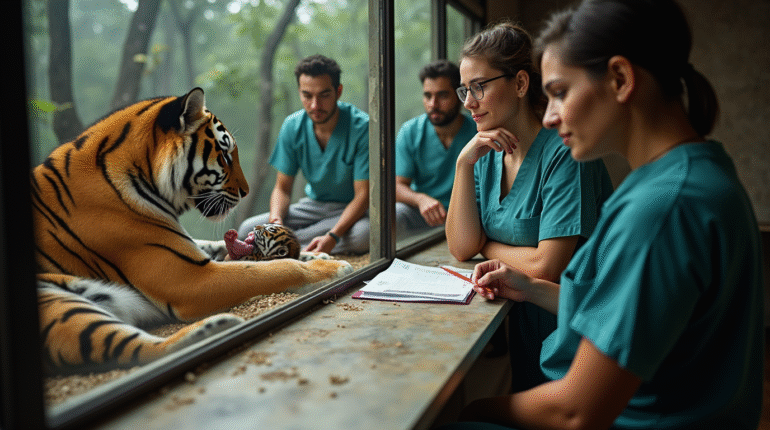
The zoo’s senior veterinarian, Dr. Emma Wilson, noted that human intervention might have done more harm than good. “Tiger mothers establish crucial bonds in those first minutes after birth,” she explained. “Our protocols require us to wait at least two hours before intervening unless absolutely necessary, as premature contact can cause rejection.
” Remarkably, Kaitlyn even severed the umbilical cord with precise bites at the perfect location – neither too close to the cub’s body (which could cause injury) nor too long (which risks infection). This flawless execution of innate knowledge offers valuable insights for improving captive breeding programs worldwide.
Conservation in Action: Why Every Tiger Cub Matters
The successful birth takes on profound significance when considering the Sumatran tiger’s dire circumstances. These majestic cats have lost over 90% of their natural habitat to palm oil plantations and suffer relentless poaching pressure for the illegal wildlife trade.
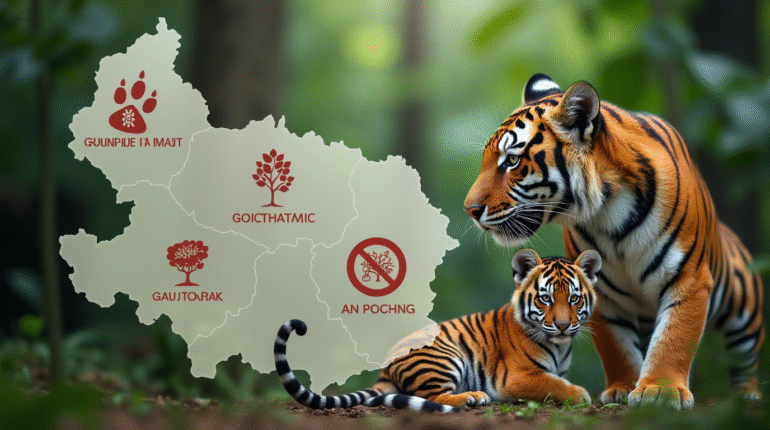
Each new cub represents about 0.2% of the entire wild population, making Kaitlyn’s twins invaluable genetic assets. The cubs, named Raja (meaning “king”) and Surya (“sun”), will participate in the Global Tiger Species Survival Plan, an international breeding program maintaining detailed pedigrees to maximize genetic diversity. “We’re not just saving individual animals,” explains conservation director Michael Thompson.
“We’re preserving the evolutionary potential of an entire subspecies.” The zoo has already observed promising behaviors, with both cubs demonstrating strong nursing reflexes and Kaitlyn showing exemplary maternal care – including the strategic relocation of her cubs to different den sites, a natural anti-predator behavior still present despite captivity.
From Crisis to Global Inspiration: The Ripple Effects of a Viral Moment
When Australia Zoo shared footage of the dramatic birth, the response exceeded all expectations. The video amassed over 50 million views across platforms, translating into an unprecedented $500,000 in spontaneous donations for tiger conservation. Social media erupted with #TigerMom hashtags, while wildlife experts praised the zoo’s restraint in allowing natural processes to unfold. Perhaps most importantly, the event sparked renewed political attention – Indonesia’s environment ministry reported a 300% increase in applications for wildlife ranger positions, and several major corporations pledged to audit their palm oil supply chains. Back at the zoo, Raja and Surya have become ambassadors for their species, their growth meticulously documented to educate the public about conservation challenges. As they approach their two-month milestone, showing playful swats and developing roars, they serve as living proof that with proper stewardship and respect for nature’s wisdom, even the most endangered creatures can have a fighting chance at survival. Their story continues to evolve, with plans eventually to introduce them to potential mates as part of the carefully managed breeding program – the next chapter in safeguarding their species’ future.
